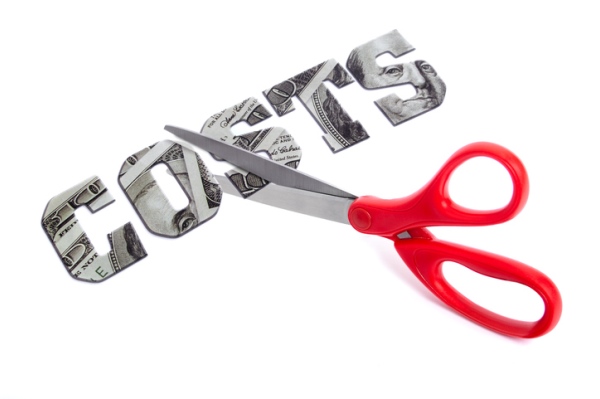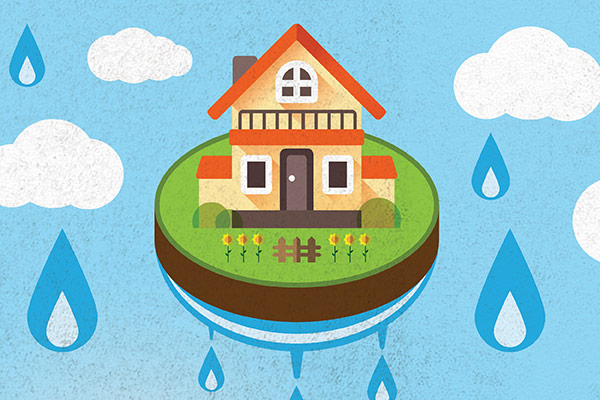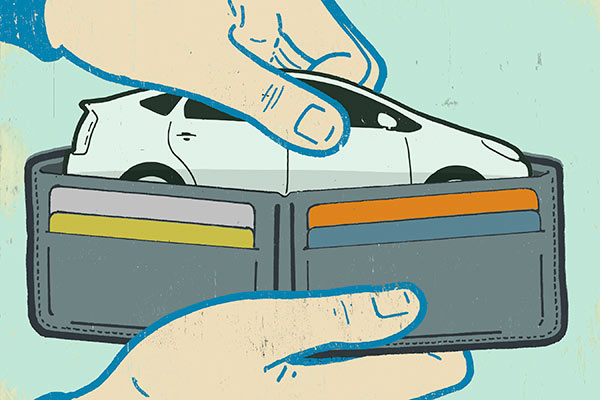Can you cut costs without clipping your lifestyle? Yes. You can even improve it. Here are some smart spending cuts that could not only save you thousands of dollars a year but also deliver greater health and happiness.
You want the best for you and your family, but what are the true costs if you’re digging a hole to get it? Are there ways to cut back that not only help your wallet but also improve your well-being?
The quest for a solid financial footing can have a positive effect in and of itself; the act of cost-cutting can empower us and alleviate stress. On top of that, we can enjoy an even bigger boost of health and happiness with the following money-saving techniques from a cross section of experts. Suddenly, spending less is the smart money—an investment in ourselves.
1. Switch To Natural Cleaning Products
Estimated annual savings: $75-$200
 Household cleansers cost $5 to $7 a bottle and can cause serious side effects. Breathing in harsh chemicals like ammonia and chlorine can lead to nose and throat irritation and severe headaches, and can corrode cells, says Ann Kulze, M.D., a Charleston, S.C.-based family physician and author of health books including Eat Right For Life. Natural alternatives such as baking soda and white vinegar cost just $1 to $2 and are equally effective, says Bankrate.com personal finance expert Jessica Patel. The fizzy combination helps scrub the grime off bathroom and kitchen surfaces and unclog drains. On its own, vinegar is an excellent glass cleaner, and baking soda can be a substitute for expensive fabric softeners. Going natural is better for your family, the environment—and your pocketbook.
Household cleansers cost $5 to $7 a bottle and can cause serious side effects. Breathing in harsh chemicals like ammonia and chlorine can lead to nose and throat irritation and severe headaches, and can corrode cells, says Ann Kulze, M.D., a Charleston, S.C.-based family physician and author of health books including Eat Right For Life. Natural alternatives such as baking soda and white vinegar cost just $1 to $2 and are equally effective, says Bankrate.com personal finance expert Jessica Patel. The fizzy combination helps scrub the grime off bathroom and kitchen surfaces and unclog drains. On its own, vinegar is an excellent glass cleaner, and baking soda can be a substitute for expensive fabric softeners. Going natural is better for your family, the environment—and your pocketbook.
2. Drop The Gym Membership
Estimated annual savings: $500 to $775
Joining a gym may seem like a great investment, but take a closer look. Average monthly plans cost $40 to $65 and often go unused. Researchers at Stanford and U.C. Berkeley discovered that members go to the gym fewer than five times a month. Instead of shelling out cash to rush to the gym and fight over elliptical machines, toss the membership and use easier alternatives. A daily, 45-minute walk burns 85 to 300 calories, depending on your pace. Also, check out your local library’s stock of workout DVDs or free fitness apps.
3. Make Most Meals At Home
Estimated annual savings: $4,200 to $5,000
Preparing more, if not most, of your own food is one of the best ways to enrich your life financially and otherwise, says financial planner Derrick Kinney, principal of Derrick Kinney & Associates. Consider all of the coffees ($2-$5 each), lunches ($5 to $10), snacks ($2) and dinners ($10 to $20) you pick up here and there that are full of bad fats, sugar and sodium. Kinney estimates that brown-bagging lunches on weekdays would save about $1,300, and cutting just three dinners out a week could free up another $2,900 each year—and do wonders for your waistline. “Add to that the quality time you gain with family connecting in the kitchen and around the dinner table,” Kinney says. If you also eliminate coffee and trips to the vending machine, you could pocket as much as $5,000 in savings a year.
4. Limit Alcohol & Sweet Drinks
Estimated annual savings: $650 to $1,300
Alcoholic and sweet drinks not only put a strain on our health but are also major budget busters. The average American male drinks 1,000 pints of beer each year according to the World Health Organization, which is well above health recommendations by the Centers for Disease Control and Prevention (two drinks a day for men, one for women). When consumed above those limits, the risk of breast and colon cancer and high blood pressure skyrockets, according to Dr. Ann Kulze. And drinking socially adds up quickly. If you purchased just two $5 drinks at the bar on weekend nights, it would cost you $960 and add 29,000 calories annually. Similarly, Dr. Kulze says many juices are loaded with sugar, and sodas—including diet versions—have zero nutritional value and are linked to weight gain and kidney problems. “Why are we paying money for this junk?” she asks. By cutting two alcoholic and three sugary drinks a week, you could save around $650 a year. For frequent consumers, letting go of your daily soda and four weekend social drinks could save upwards of $1,300 annually. Water is the best choice for your health and your wallet—and opting for tap over bottled makes it free.
5. Make A Monthly Budget—and Stick To It
Budgeting may seem like self-deprivation, but it doesn’t have to be. “It’s about taking charge of your personal economy,” says Kinney. “Good spending habits enrich your life financially and emotionally. Rather than worrying about what you’re giving up, consider what you’re gaining.” Ready to get started? Check out our Budget Basics to Live By.
Another easy way to save money? Make sure you’re getting the best bang for your insurance dollar. Get a fast, free quote on auto, homeowners, renters, or motorcycle insurance, and more, and see how much you could save when you switch your policies to GEICO.
By Jenna Goudreau











Larry Lipovsky says,
Good information. Thank you